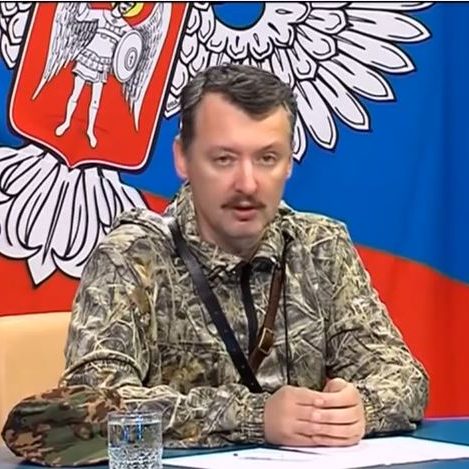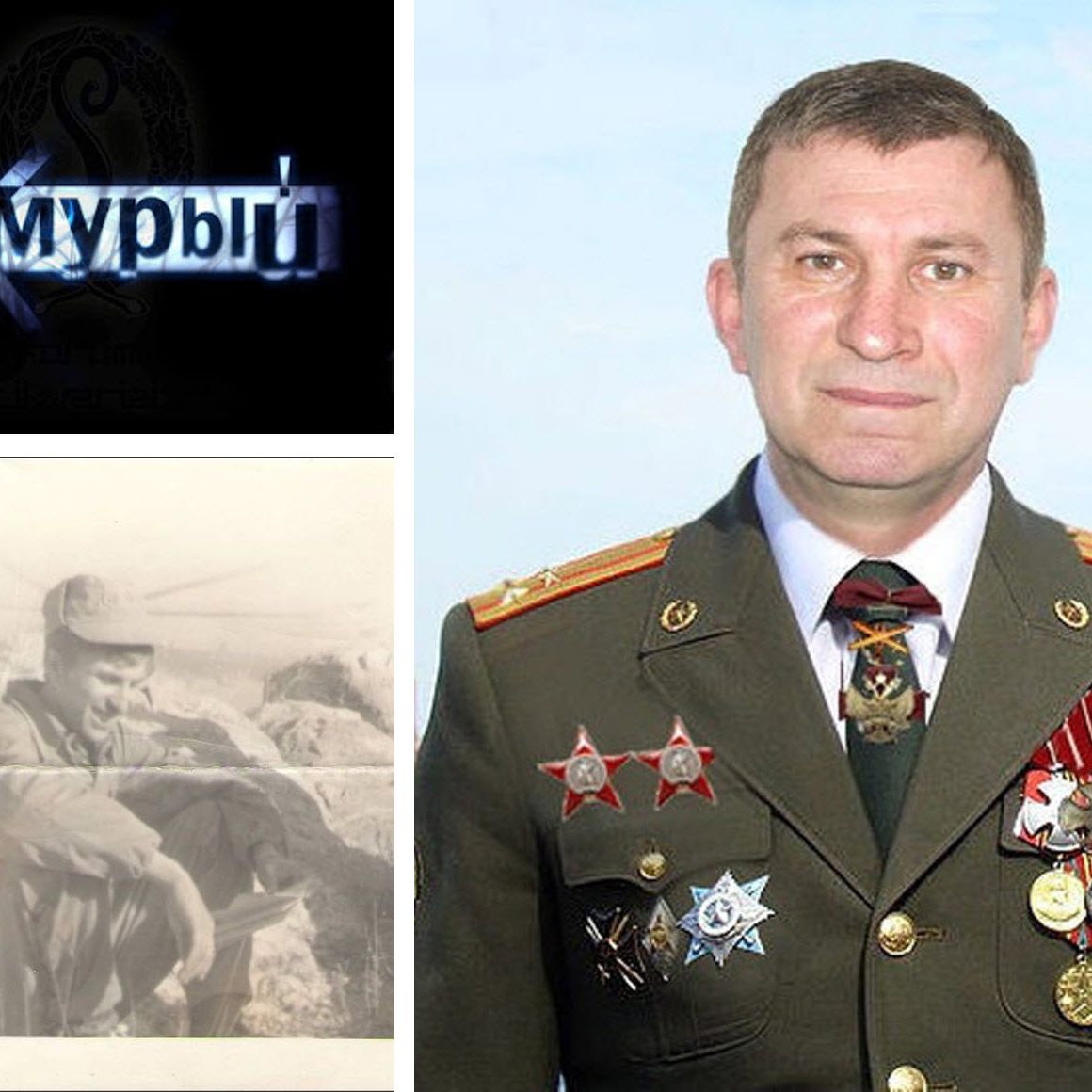The intercepts prove that the Russian hybrid forces indeed shot down the passenger flight because they mistook it for a Ukrainian military plane, as well as demonstrate that Moscow had full political and military control over the conflict in eastern Ukraine in 2014.
Malaysia Airlines Flight 17 (MH17) was shot down over Donetsk Oblast in the east of Ukraine on 17 July 2014; all 15 crew members and 283 passengers died. Comprised of prosecutors from the Netherlands, Ukraine, Malaysia, Belgium, and Australia, the Joint Investigation Team (JIT), which conducted the criminal investigation in the MH17 case, found that the passenger Boeing-777 was hit by a 9M38 Buk surface-to-air missile launched from an agricultural field near the village of Pervomaiskyi, which at that time was “controlled by separatists” i.e. by the militants of Russia-hybrid forces.

The conversations presented by Niewsuur in the video mostly date back to the day before MH17 was shot down, the day of the crash, and the next day.
For example, one of the conversations shows the possible origin of one of Russia’s many absurd versions for the culprit of the crash: that a Ukrainian ground-attack aircraft Sukhoy Su-25 with a service ceiling of only 7 kilometers somehow managed to reach an altitude of 10 km and allegedly use one of its missiles to hit the passenger Boeing-777.
Earlier, JIT published 12 other recordings and put on the wanted list four suspects — three Russian nationals and one Ukrainian. The MH17 trial has been underway in the Netherlands; however, all those four have been tried in absentia so far.
- Read also: Intercepted phone calls show MH17 suspects’ connections to Russian military and Kremlin (2019)
The tapes now released by Nieuwuur shed more light on the events around the MH17 catastrophe.
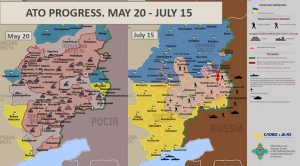
Nieuwsuur says that they have the audiotapes of the phone calls by one of the four MH17 defendants, Sergey Dubinsky, that he made in 2014 in the months of July and August.
A veteran of Afghan and Chechen wars, retired Russian military intelligence officer Dubinsky headed a “DNR reconnaissance and espionage unit” in summer 2014. Dutch prosecutors say he played a key role in the downing of flight MH17.
In the tapes, Dubinsky converses with three other MH17 defendants and a few other interlocutors. Those three are:
- a retired operative of the Russian secret police FSB, Igor Girkin, who had effectively started the hot stage of the war in the Donbas by seizing the cities of Sloviansk and Kramatorsk in April 2014; at the time around the MH17 crash, Girkin was the “DNR defense minister”;
- Dubinsky’s deputy Oleg Pulatov, a Russian reserve military man;
- Ukrainian citizen Leonid Kharchenko, Pulatov’s subordinate to whom Dubinsky often talked directly.
Buk arrives in Snizhne area
The first tape presented in the Nieuwsuur video shows a conversation of Leonid Kharchenko with Dubinsky on 16 July, a day before the deployment of the Buk TELAR from Russia.
The Russian-hybrid forces were suffering heavy losses from Ukrainian artillery and aviation in the area of Marynivka, a Russian-controlled village 5 kilometers away from the Russian border. Ukrainian troops held the 5 km strip between Marynivka and the border. In the case of the Ukrainian offensive on Marynivka, Ukraine could get an avenue to Snizhne and further north, which might have resulted in Ukraine separating and encircling the area controlled by the Russian occupation forces, self-described as the “Donetsk people’s republic” (DNR). That’s why earlier that month, Pulatov was ordered to conquer the Ukraine-controlled stretch of the border here.
In the conversations, Kharchenko and other interlocutors often call Dubinsky by his patronymic – derived from the given name of Dubinsky’s father – as Nikolaevich, which is an informal respectful way to address an older interlocutor in southern Russia and in Ukraine:

Kharchenko: Good day, Nikolaevich!
Dubinsky: You think that one is good? I don’t.
Kh.: I don’t either. 30% of my personnel is no more.
D.: 300s? (military code for the injured, – Ed.)
Kh.: 200s (code for the killed, – Ed.), 300s.
D.: That’s f*cked up. It’s the artillery that shoots them out, isn’t it?
Kh.: Yes. It’s a circus out there, Nikolaevich. Why were we deployed here like cannon fodder?
Another conversation of 16 July, in which Dubinsky talked with another defendant, his deputy Oleg Pulatov mentions the units high hopes for the Buk launcher to counter the Ukrainian air raids, and Dubinsky promises his subordinate that the Buk would be delivered:
Oleg Pulatov: We don’t need tanks, we only need long-distance artillery and proper air defense means. Their plane worked out from a great altitude so, practically, no system [of ours] could reach it.
Sergey Dubinsky: I will try, if they tow it here tonight, [to make sure that] the Buk-M would get to you there.
P.: Aha, got it.
D.: As we can’t do anything else, we can only hope for a Buk, eh?
P.: Uhu.
Further on, someone with call sign Bibliotekar (“Librarian”) informs Dubinsky that the Buk has arrived in Donetsk and asks for his instructions as to where he has to deliver the piece of hardware:
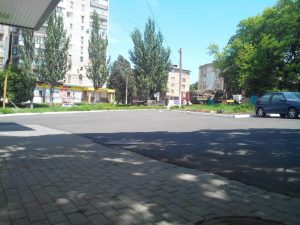
Dubinsky: Yes, I’m listening to you, Buryatik.
“Bibliotekar”: Hello, Nikolaevich. Where are we [supposed] to unload this beauty?
D.: Which? That one?
B.: Yes, the one I’ve brought. I’m already in Donetsk.
D.: Is it the one I was thinking of? which is the “M”?
B.: Yes, yes.
D.: “B-M”?
B.: The Buk…
D.: Yes-yes-yes, I get it.
B.: Buk, Buk, Buk.
D.: Is she on whatsitsname… on a trailer?
B.: Yes, she is on the one. We need only to unload it in order to hide it.
Later, Dubinsky instructs Pulatov to welcome the Buk:
Dubinsky: Listen to me, Krot (“Mole”) is going to tow the Buk-M to you now. Hello?
Pulatov: Aha, yes, got it.
D.: It needs to be put somewhere in the area of Pervomayske, that Buk-M. And three “Vostok” [battalion] tanks will come with the guards.

On 17 July 2014, fifteen minutes after the Malaysian Boeing took off from the Amsterdam Airport Schiphol bound for Kuala Lumpur, a Russian Armed Forces’ Buk TELAR (transporter erector launcher and radar) entered the Ukrainian town of Snizhne under control of the Russian-hybrid forces.
The Buk was positioned around 14:00 and blasted the Malaysian airliner out of the sky at 16:20, when a missile launched from the Buk blew up right near the cockpit of the Boeing at an altitude of 10 kilometers.
MH17 down
After downing the passenger Boeing, Kharchenko calls Dubinsky to brag believing that the Buk crew has hit a Ukrainian military fighter jet:
Dubinsky: Hello.
Kharchenko: Hello, Nikolaevich. We’re on site. We have already shot down a Sushka (military slang term for any model Sukhoy aircraft such as Su-25, – Ed.)
Dubinsky: Well done, oh well done! Shot down one Sushka, well done.
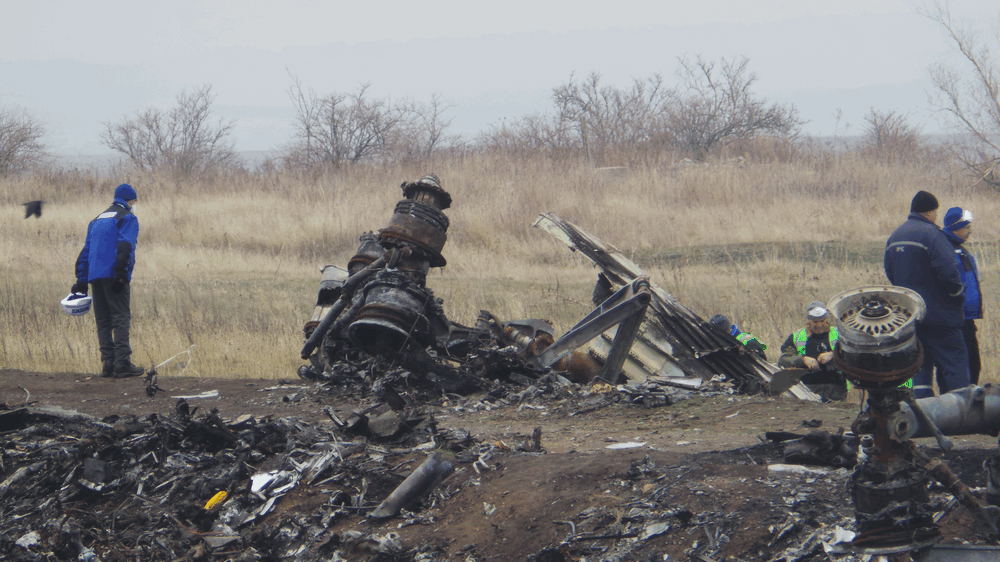
In the next phone call, an unidentified person whom Dubinsky addresses as Igor calls him to get a clarification on a Boeing that has crashed in the area:
Unknown: I have one more question. I’m getting calls from journalists […], particularly ones from NTV (a Russian TV channel, – Ed.). They say a Boeing crashed just near Donetsk. Some 80 kilometers away. It is true?
Dubinsky: You mean there’s a battle going on? (he probably misheard the word Boeing as “boy” the Russian for “battle,” – Ed.)
U.: Boeing! A plane has crashed.
D.: Ah, our guys shot it down at Savur-Mohyla, there near Marynivka. Our guys have shot down a Sushka…
U.: And people say some Boeing crashed there.
D.: Somewhere around Khartsyzk – between Khartsyzk and Horlivka – some plane crashed, they say. But I’m not abreast of what’s there so far. And our guys shot down a Sushka near whatsitsname…
U.: Yes, I know that. But people are interested in that Boeing.
D.: Igor, I’m not away, frankly.
U.: Fine, sorry [to have troubled you]…
Soon after, Dubinsky is told to report to “minister” Girkin. He consults his deputy Pulatov, who assures that it was a Ukrainian Sukhoy fighter jet that somehow shot the Boeing down and that their Buk then hit that jet, not the Boeing. An awkward excuse hastily made up to justify their actions and accuse Ukraine after the Russian operatives realized that it wasn’t a Ukrainian military plane that they shot down and even managed to report it in media:
Dubinsky: It was a [Ukrainian] Sushka that f*cking blew the Boeing away, right?
Pulatov: Yes, yes, yes.
D.: Aha, got it, did you guys see it [happening], observed it?
P.: They saw it from the ground. I myself was in Marynivka.

Pulatov allegedly had no idea that MH17 cruised at 10 kilometers and it’s quite hard to spot a large Boeing at such an altitude, let alone a small Su jet, especially on a cloudy day, as it was on 17 July 2014.
And here Dubinsky reports to Girkin insisting that the Ukrainian Air Force is to blame:
Dubinsky: A Sushka [fighter jet] annihilated the Boeing, and our guys f*cking shot down that Sushka from the Buk.
G.: Mhm.
D.: Good news?
G.: Well, I don’t know. Honestly, I don’t really believe it.
D.: In any case, they will blame us for shooting [it] down.
G.: That’s clear.
Returning the Buk TELAR to Russia

According to Nieuwsuur, at 20:30, five hours after the crash of MH17, Dubinsky called Girkin and the “minister” ordered him to take the “box” (the military slang for a tank or any other tracked vehicle such as a Buk, – Ed.) to Donetsk regional border with Luhansk Oblast.
Kharchenko: Where do I take it?
Dubinsky: Didn’t get it.
Kh.: Where do I take, escort it to?
D.: To the border of Luhansk Oblast.
Kh.: Aha.
D.: And that will be it. Understood?
Kh.: So I get it there and come back?
D.: Yes, further on they’ll go by themselves (the Buk crew, – Ed).

But 45 minutes later, the Buk was still in Snizhne, less than 10 kilometers from the original position, Nieuwuur says. And after midnight, Dubinsky and Girkin lost sight of the Buk entirely. Both are on the rampage as they both see returning the Buk to Russia as the only solution way to avoid accusations of shooting down the Boeing:
Dubinsky: I wish I knew where they are sitting in Snizhne, for f*ck’s sake.
Girkin: They aren’t sitting, they’re going back.
D.: Got it. [If] I’m about to enter Snizhne now, where should I look for them?
G.: They went… I don’t know, either, f*ck. You’re the one who should know that, for f*ck’s sake.
D.: I should know?
G.: Or should I drive out there myself, personally in my car?
D.: Was it me who had taken away the BTR (an armored personnel carrier, – Ed) from my people?
G.: F*ck, you had one BTR, stop screwing my head, dammit. Go there, do what you want, or we’ll all end up in f*cking you know where.
D.: “Go there I don’t know where,” for f*ck’s sake. Of course, I’ll go now.
G.: That’s it! Stop f*cking around! I am leaving there myself.
According to Nieuwuur, the next morning, Kharchenko told Dubinsky that the Buk had returned to Russia. To be sure, Dubinsky called “Bibliotekar” who was in charge of the transport.
“Bibliotekar”: Good morning.
Dubinsky: Listen, did our guys give you the “box” last night? Have you taken it away or not?
B.: Yes, I brought it away, but… I’ll come over later and tell you the complications with which it was all done.
D.: I mean is it no longer here? It’s on the other territory?
B.: Not here, no, it’s already there.
D.: Got it. Good. Thank you.
B.: Yes, Nikolaevich, see you.
That morning at 10:50, it was the last call about MH17 Dubinsky received. Later he returns to the “business as usual,”
“Sanych”: We’re getting there to take him and, as you say, we’ll be shooting him. A location has been prepared.
D.: No-no-no, it’s not an issue. I thought you need my help to call the Mongols to order (the “Mongol” was one of “DNR spetsnaz” commanders who was engaged in torturing hostages in the infamous Izolyatsia prison, here Dubinsky refers to his unit by the name of its commander in the plural, – Ed.)
S.: No, they’re turning him over now. He was hammered, bitch, shot his rifle at kiosks.
Then Dubinsky changed his telephone number, however, none of the tapped conversations from that new number mentioned anything related to MH17, Nieuwuur says.
Russian control of the occupied territory
According to Niewsuur, one of Dubinsky’s conversations with an unknown interlocutor dated 4 July evening shows that Moscow was behind the highest-level military and political decisions in the occupied territory of eastern Ukraine:
Unknown: Today I talked with a guy who flew here from Moscow today. He says that most probably the command personnel will be replaced entirely, the DNR’s, directly… er… not the command but political one…
Dubinsky: I understand, yes.
U.: …is this true?
D.: For now, we’re waiting, first for Moscow’s decision as to withdraw [troops] from Sloviansk or not. You get it? It’s number one.
The Russian-hybrid forces left Sloviansk on the next day, 5 July 2014. Girkin was dismissed as the “defense minister” in mid-August.
- Read also:
- Who is who in the Kremlin proxy “Donetsk People’s Republic” (2017)
- Who is who in the Kremlin proxy “Luhansk People’s Republic” (2018)
Another tape allegedly shows that Girkin was under direct command from Moscow as the “Donetsk people’s republic’s defense minister”:
Igor Bezler: Convince the First [i.e. the “top boss,” Igor Girkin] that we should withdraw our people from Sloviansk or we lose everything there.
Dubinsky: The issue is that he has now contacted Moscow and they want him to stay in Sloviansk.
These conversations are two more pieces of evidence showing that Russia’s puppet statelets of the Luhansk and Donetsk “people’s republics” are fully run by Moscow.
Halya Coynash of the Kharkiv Human Rights Group points that “there is no guarantee that he will acknowledge the new” tapes. Nevertheless, if these tapes were tested by the JIT investigators, we can see them presented as evidence later at the ongoing MH17 trial.
Further reading:
- JIT charges four suspects over downing MH17, Bellingcat identifies eight more
- Intercepted phone calls show MH17 suspects’ connections to Russian military and Kremlin
- How Russia invaded Ukraine as told by FSB colonel Girkin (2014)
- A guide to Russian propaganda: Rapid fire conspiracy theories
- The most comprehensive guide ever to MH17 conspiracies
- Flight MH17: Why can’t the Kremlin tell the truth?
- Russian media forge more papers to blame Ukraine of downing MH17, make bad grammar mistakes
- Why did Russia close its airspace near Donbas one day before flight MH17 was downed?
- Four years on, Russian MH17 disinformation campaign still going strong
- Russia’s MH17 narrative: a year of self-incrimination
- Russia planned to shoot down Aeroflot plane to justify invasion — SBU
- Ukraine had no reason to close its airspace above 10 000 m before MH17 disaster | Infographic
- SBU: Wiretap proves terrorists possessed ‘Buk’ missile launcher
- Breaking News: Malaysian plane crashes on Ukraine-Russia border (2014)



